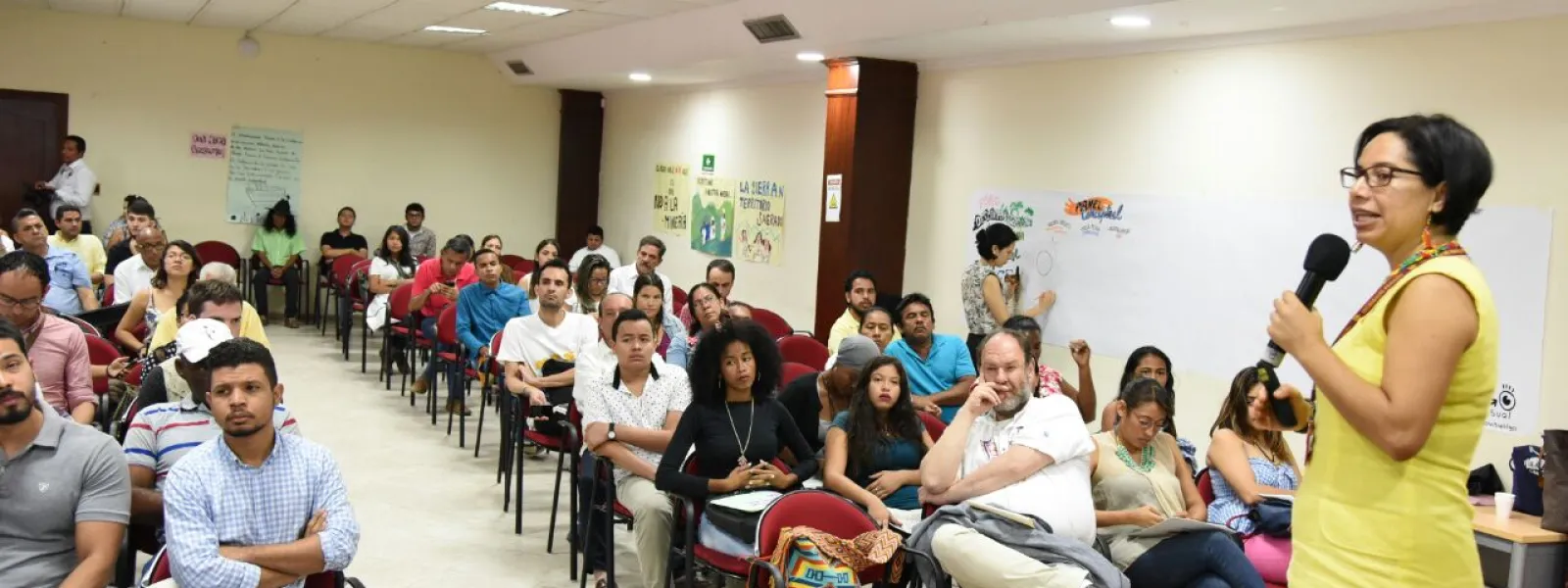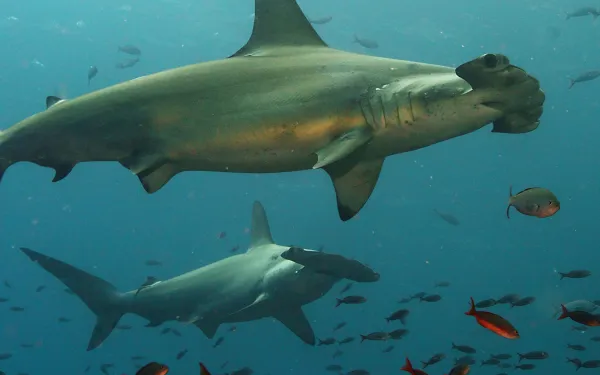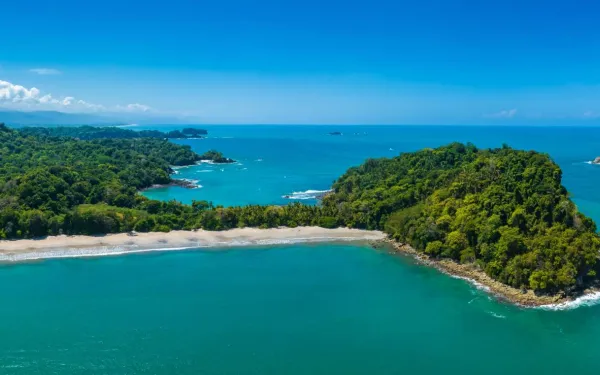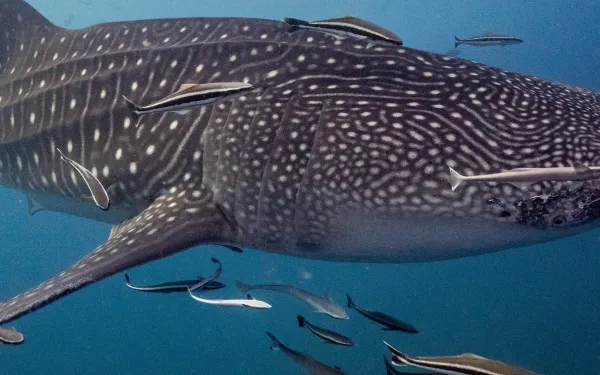
Project
Organizing the Network for Environmental Justice in Colombia
The Network for Environmental Justice in Colombia is an effort to coordinate organizations and legal resources for the protection of human rights and the environment.
The Network was founded in 2010 under the coordination of AIDA and with the help of the Latin American Institute for Alternative Society and Law, the Institute for the Study of Peace and Development, the Inter-Ecclesial Commission for Justice and Peace, and the University of Los Andes, the University of Caldas, and Del Rosario University. The network began with 79 participants and now includes more than 500 people and participating organizations.
The Network’s principal objective is to propose solutions to environmental conflicts in Colombia. It also aims to promote the fair and effective use of international and domestic environmental law, in particular, the right to a clean and healthy environment.
What does the network do?
- Facilitates the exchange of knowledge and information to implement legal strategies in precedent-setting cases. One such project was the Mandé Norte Mine, in which several members of the Network developed a legal strategy, resulting in a judicial decision that established Colombia’s need to perform an independent environmental impact assessment. Most importantly, the decision also mandated that developers obtain the consent of indigenous peoples before moving forward with any projects in their territory.
- Promotes organizational alliances, garners support, and connects legal work in defense of the environment.
- Organizes conversations, forums, and constructive debates on environmental issues.
- Provides access to legal resources including laws, court decisions, articles and legal analysis, and facilitates communication through its website and social media channels.
- Advises law students through the AIDA volunteer program. In doing so, the Network strengthens the capacity for environmental law in Colombia.
Partners:

AIDA Celebrates Historic High Seas Treaty and Calls for Effective Implementation
The Interamerican Association for Environmental Defense (AIDA) celebrates the Treaty on the High Seas (BBNJ Agreement) reaching the 60 ratifications required for its entry into force, which is set for January 17, 2026. This marks a historic milestone for ocean protection and the well-being of millions of people across Latin America and around the world.“From Latin America, we celebrate the entry into force of the High Seas Treaty—a global milestone that brings us closer to achieving sustainable, equitable, and fair ocean governance. AIDA also recognizes the vital role of Latin American ocean champions who ratified the Agreement, as well as the active participation of the region throughout the negotiations and leading up to this historic moment,” said María José González-Bernat, Director of AIDA's Ocean Program.“We will continue working alongside governments, civil society organizations, academia, Indigenous Peoples, and local communities to ensure the effective implementation of this treaty, which is essential to protecting our collective future,” she added.AIDA has played an active role throughout the process, co-leading Latin American civil society contributions as part of the High Seas Alliance to help secure a strong agreement that reflects the realities, expectations, and challenges of the region.In addition, AIDA has provided technical support to regional delegations participating in the sessions of the Preparatory Committee, a United Nations body tasked with advancing the issues to be addressed at the first Conference of the Parties (COP) of the agreement, scheduled 120 days after its entry into force.The High Seas Treaty—formally known as the Agreement on the Conservation and Sustainable Use of Marine Biological Diversity of Areas Beyond National Jurisdiction (BBNJ Agreement)—offers numerous benefits, including the creation and effective management of marine protected areas on the high seas to conserve the ocean’s rich biodiversity.It also requires that any new high-seas activities undergo environmental impact assessments that account for the cumulative effects of multiple activities on a single ecosystem.Beyond the milestone of reaching 60 ratifications, it is essential that all countries—not just the initial 60—adhere to the agreement to ensure fair, equitable, and sustainable governance of high-seas biodiversity. This is critical for the treaty’s effective implementation, including achieving its conservation objectives and ensuring all countries can participate in its benefits.At AIDA, we will continue to focus on Latin America to ensure that the High Seas Treaty leads to concrete actions for the protection and sustainable use of the high seas—a shared responsibility of all governments.Find out what the members of the High Seas Alliance think.Press contactVíctor Quintanilla, [email protected]
Read more
The Ocean-Climate Link: 5 Things to Know
Por Víctor Quintanilla y Natalia Oviedo*Although the ocean is essential for stabilizing the planet's climate, it is rarely the focus of attention when we talk about the global climate crisis.The ocean is our best ally in the face of the climate emergency because it absorbs much of the greenhouse gases that humanity emits and that are the source of the problem.At the same time, the ocean is a victim of the climate crisis, whose impacts are pushing it to the limit with acidification of its waters, rising sea levels, and loss of oxygen, processes that seriously affect marine life.Despite its importance, the relationship between the ocean and climate has not been fully included in international negotiations in which governments seek agreements and policies to address the climate crisis.Faced with this gap and in a historic breakthrough, the International Tribunal for the Law of the Sea issued a ruling in 2024 clarifying the obligations of States to protect the marine environment from the climate crisis.Below, we present five keys to understanding the link between the ocean and climate.1. The role of the ocean in the climate crisis.According to the Intergovernmental Panel on Climate Change, the ocean is “a fundamental climate regulator on timescales ranging from seasonal to millennial.” Since 1955, it has absorbed 90 percent of the excess heat caused by global warming, along with a quarter of the carbon dioxide released by human activities.Ocean currents transport warm water from the tropics to the poles, sending colder water back. This balances the temperature and makes much of the Earth habitable. The ocean influences climate variations on land by being the main source of rain, which feeds rivers and other vital freshwater systems.The ocean is known as a lung for the planet because, through microscopic organisms known as phytoplankton, it is responsible for generating approximately half of the world's oxygen supply. In turn, coastal ecosystems such as mangroves, marshes, and seagrass beds absorb enormous amounts of carbon from the atmosphere, mitigating the climate crisis. 2. The impact of the climate crisis on the ocean.The climate crisis alters the physical and chemical properties of the ocean, affecting its ability to regulate the climate. One of the irreversible impacts of climate change is ocean warming, whose rate and heat absorption has more than doubled since 1993. As its waters warm, they begin to release carbon dioxide back into the atmosphere.In addition, rising ocean temperatures are expected to reduce the amount of oxygen available, altering nutrient cycles and thereby affecting fish distribution and abundance. Another consequence is sea level rise, which is due to thermal expansion of the ocean and loss of land ice.Finally, the absorption of increasing amounts of carbon dioxide has resulted in ocean acidification, understood as a decrease in pH. This reduces calcium levels, a substance necessary for the shells and external skeletons of various species of marine fauna and ecosystems such as coral reefs.3. The inclusion of the ocean in international climate negotiations.Although the link between the ocean and climate change has been recognized since the beginning of negotiations under the United Nations Framework Convention on Climate Change (UNFCCC)—by including the ocean in the definition of “climate system”—its presence in these negotiations has been gradual. A decisive milestone occurred at the 25th UN Climate Change Conference (COP25) in 2019, where the first official dialogue on the subject was called for, resulting in recommendations to align climate and ocean action, while also promoting the mobilization of financing to protect marine ecosystems. Since then, the ocean has earned a permanent place on the climate agenda. At subsequent conferences, the inclusion of the ocean was further expanded. The Glasgow Climate Pact (COP26, 2021) recognized the ocean as an ally in carbon absorption, called for the integration of ocean-based action into UNFCCC work plans, and mandated an annual dialogue on the topic. At COP27 (2022), countries were encouraged to include ocean-based action in their nationally determined contributions (NDCs). And at COP28 (2023), the ocean was included in the first global stocktake of the Paris Agreement.Ahead of this year's COP30 in Brazil, which will have a specific agenda on “Forests, Oceans, and Biodiversity,” the challenge is to move from political recognition to the implementation of concrete actions to protect the ocean.4. States' obligations to protect the ocean in the face of the climate crisis.The health and resilience of the ocean is essential not only for addressing the climate crisis, but also for the exercise of fundamental human rights such as life, health, culture, food, access to water, and the right to a healthy environment. This highlights the interdependence between the ocean, climate change, and human rights.Recognizing this link, on May 21, 2024, the International Tribunal for the Law of the Sea issued an important decision clarifying the obligations of States to preserve the ocean in the face of the climate crisis. These duties include adopting concrete mitigation measures to minimize the release of toxic substances into the marine environment, as well as exercising strict due diligence to ensure that non-state actors effectively comply with such measures.The tribunal emphasized the obligations of states to prevent climate change-related pollution that affects other states and the marine environment outside national jurisdiction. In relation to the right to a healthy environment, the ruling emphasizes the use of precautionary and ecosystem approaches in the context of states' obligations to conduct environmental and socioeconomic impact assessments of any activity that may cause marine pollution related to climate change. This includes that, in the face of the possibility of serious or irreversible damage to the marine environment, the lack of full scientific certainty should not be used as an excuse to delay protective measures.5. Some key actions to protect our ocean and, with it, the climate.Effective protection of our ocean requires the commitment of governments, which must act at the national and international levels to prioritize its health. These include:Prioritizing concrete measures that integrate the ocean into climate mitigation and adaptation actions. Among the most effective are the protection and restoration of ecosystems, especially those that, in addition to capturing and storing enormous amounts of carbon, protect coastlines and maintain vital ecosystem services (mangroves, marshes, seagrass beds, coastal wetlands, and coral reefs, among others).Ensuring the protection and sustainable use of biodiversity in the ocean area beyond national jurisdiction. This involves the effective implementation of the High Seas Treaty, which will enter into force on January 17, 2026, as well as its ratification by countries that have not yet done so, to ensure fair, equitable, and sustainable governance.Defending the deep sea from mining. This requires imposing moratoriums on deep-sea mining activities on the grounds that there is insufficient technical and scientific information to prevent, control, and mitigate the potential impacts on the biological diversity of unknown ecosystems in deep waters and on the seabed.Protect the rights of coastal and island communities, which depend on fishing and local tourism for their livelihoods. These populations face increasing impacts from the climate crisis and multiple environmental pressures. Governments have a responsibility to ensure their resilience and well-being by safeguarding the marine and coastal biodiversity that sustains their ways of life and culture.Acknowledging the link between the ocean and climate, and translating it into concrete and effective measures, is essential to protect and maintain the balance of both life systems.This is what will guarantee the health of marine and coastal biodiversity, our food security, and, ultimately, a future for the planet.* Víctor Quintanilla is AIDA's Content Coordinator; Natalia Oviedo is a Costa Rican international lawyer and former intern at the organization.
Read more
Historic milestone for global ocean protection: 60th ratification triggers entry into force of High Seas Treaty
Following the deposit of ratification instruments by four new countries this week at the United Nations–Sri Lanka, St. Vincent and the Grenadines, Sierra Leone and Morocco- the High Seas Treaty has reached the milestone of 60 state ratifications needed to trigger its entry into force. Formally known as the Agreement under the United Nations Convention on the Law of the Sea on the Conservation and Sustainable Use of Marine Biological Diversity of Areas Beyond National Jurisdiction (or BBNJ Agreement), the Treaty will become legally effective 120 days from today (17 January 2026).“This historic moment is the culmination of years of dedication and global diplomacy by governments and stakeholders” said Rebecca Hubbard, Director of the High Seas Alliance. “The High Seas Treaty is a powerful testament to multilateralism- showing what the world can achieve when we come together for the common good for our ocean, which covers more than 70% of the planet. Today marks an important step when promises start becoming action.”The Treaty is the first legally binding international agreement safeguarding marine life in the High Seas, which covers two-thirds of the world’s ocean and plays a critical role in ensuring a healthy planet. It provides new tools to halt biodiversity loss and ocean degradation through enabling the creation of marine protected areas (MPAs) in international waters and ensuring environmental impact assessments of planned human activities. It will also boost equity for developing countries through increasing knowledge and technology access, strengthening capacity, and ensuring the equitable access and sharing of the benefits of marine genetic resources.These provisions are vital to achieving climate and biodiversity global goals, including the Kunming-Montreal Global Biodiversity Framework (GBF) 30×30 target to protect 30% of the planet’s land and ocean by 2030.Adopted in June 2023, after nearly two decades of discussion and negotiations, the Treaty opened for signature on 20 September 2023. Palau became the first country to ratify on 22 January 2024, and since then States from every region have joined. In addition to the 60 ratifications, 142 countries plus the European Union have signed, signaling their intent to ratify.Under the Treaty, the first Conference of the Parties (CoP) must convene within a year of entry into force, likely toward the end of 2026. Preparatory work is already underway at the UN to build the institutions and processes in time for CoP1 that will ensure the Treaty’s ambition and long-term effectiveness. Governments and stakeholders are also laying the groundwork for developing High Seas MPA proposals to protect critical biodiversity sites once the Treaty is operational. These include the Salas y Gómez and Nazca Ridges, the Lord Howe Rise and South Tasman Sea, the Sargasso Sea and the Thermal Dome in the Eastern Pacific.“Achieving 60 ratifications is not the finish line–it’s just the starting block,” said Rebecca Hubbard. “The Treaty’s true strength lies in universal participation. While we must celebrate this incredible progress, we urge all remaining nations to join this historic Agreement and help us go from 60 to global ahead of the first CoP.”Further ratifications are expected during the upcoming UN General Assembly High-Level Week in New York (beginning 22 September 2025). Notes to editorThe official status of signatures and ratifications can be found on the UN website and the High Seas Alliance’s ratification tracker. Note: The number shown on the High Seas Alliance tracker reflects only the ratifications that count toward entry into force and does not include the EU’s ratification and therefore differs from the UN’s total count. The High Seas Alliance (HSA) sometimes uses the term "High Seas Treaty" as a short-hand for the BBNJ Agreement. HSA acknowledges that the scope of the BBNJ Agreement encompasses all Areas beyond national jurisdiction, including the seafloor and water column. This choice of wording is intended to ease understanding for broad audiences and does not convey a prioritization among the components or principles of the BBNJ Agreement.
Read more